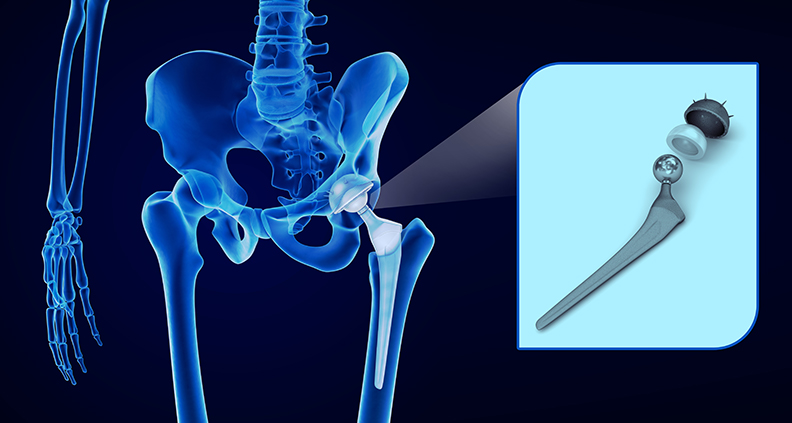
FDA is taking a closer look at materials used in medical devices, citing growing evidence that a small number of patients may have adverse biological responses to certain types of materials. Important to the orthopedic industry, as part of the announcement, FDA called out the use of metal-on-metal (MoM) in hip replacement and noted actions that it will take on materials later this year.
FDA said that its announcement is based on evaluation of published studies, and information submitted to the agency as reports in its public adverse events database or through data from postmarket studies that were required of manufacturers. Additionally, FDA scientists and engineers based in the Center for Devices and Radiological Health’s Office of Science and Engineering Laboratories have been conducting research to better understand device materials.
MoM Hip Replacement
While no MoM hip replacement devices are marketed in the U.S. today, manufacturers continue to conduct postmarket studies. FDA provided interim results of studies that track patient ion levels and clinical outcomes, as well as explant analysis study of failed devices. The results showed:
- Significantly higher blood levels of metal ions (cobalt and chromium) in patients with metal-on-metal hip implants compared to those without metal implants. The standard blood level threshold measurement of 7.0 parts per billion (micrograms/liter) or higher for metal ions is not optimal to determine whether an implant is functioning safely. Some patients had higher levels of ions in their blood with no adverse medical complications, while others had severe symptoms with lower levels. FDA says that this suggests that additional factors, besides metal ion levels, lead to adverse events in patients with these implants.
- An analysis of more than 2,000 implants that were removed found that on average, patients who had their devices removed had higher metal ion levels compared to other patients in the postmarket surveillance studies who didn’t. Additionally, wear between the ball and socket was found to be higher than expected based on premarket tests. When considering the explanted devices, it appeared that certain factors, including those related to the design or surgical placement of the device, may be associated with a higher wear of the device and elevated metal ion levels.
Next Steps
As FDA noted in its MoM update, multiple factors must be considered in deciding why certain materials cause adverse effects in patients. This lack of understanding is driving FDA’s focus on materials.
“Enhancing our collective understanding of materials science could lead to identifying materials that may cause an exaggerated response in sensitive individuals and advance the development of safer materials. Development of new tests to identify at-risk patients would help ensure they do not receive implantable devices that contain the material to which they are sensitive, therefore further enhancing patient safety and advancing a precision medicine approach to the selection of device interventions,” FDA Commissioner Scott Gottlieb, M.D., and Jeff Shuren, M.D., Director of the Center for Devices and Radiological Health, said in the statement.
Orthopedic device companies should look for a number of next steps by FDA.
- Regarding MoM hips, FDA is working with organizations such as ASTM to develop new standards to improve how MoM hips are evaluated and testing protocols for new MoM devices that are submitted to FDA for review.
- In April, FDA published draft guidance on the use of nitinol in medical devices. FDA’s guidance noted the increased use of nitinol in orthopedics, including minimally invasive procedures and fracture repairs. The guidance includes recommendations on what manufacturers should include in their premarket submission, including mechanical testing and corrosion testing recommendations, biocompatibility and labeling and information on how the device is manufactured and other factors that could affect the breakdown of the material in the body.
- FDA plans to release a peer-reviewed white paper that summarizes the current scientific knowledge regarding different aspects of metal implants, including how the structure and function of these devices are impacted by the body’s tissues, muscles and blood supply and how the metal components dissolve and interact with immune cells.
- FDA plans to hold an advisory committee meeting this fall to discuss metal implants and the potential risk for certain patients to have “hypersensitivity” or exaggerated immune and inflammatory reactions to these metals. The panel meeting will engage experts to provide input on what relevant scientific information FDA should solicit from manufacturers to be considered in both premarket review and postmarket surveillance.
What does all of this mean for orthopedic manufacturers? FDA’s announcement indicates that manufacturers should expect greater scrutiny of materials during premarket and postmarket activities.
Send comments regarding this article to Carolyn LaWell.




